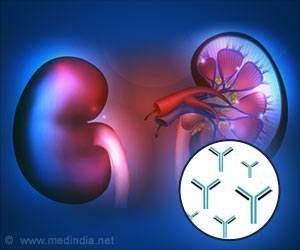Protein hnRNP A1 linked to myelin stability, impacting disorders like MS and schizophrenia.

Impacts of hnRNP A1 Splicing Inhibition on the Brain Remyelination Proteome
Go to source). Myelin is a fatty substance produced by oligodendrocytes (cells of the central nervous system) that forms a sheath, like a kind of “insulator.” It “protects” the extensions of neurons (axons) and increases the conduction speed of nerve impulses that carry information between neural cells. Scientific literature has shown that patients with multiple sclerosis and
‘Scientists have discovered the crucial role of the hnRNP A1 molecule in maintaining #myelin sheath integrity. Could this be a new avenue for understanding #schizophrenia? #Neuroscience #MentalHealthResearch’





This rodent study examined changes in proteins essential for myelin production (myelination). The results highlight the involvement of hnRNP A1 in maintaining the integrity of this protective sheath.hnRNP A1: A Key Regulator in Myelin Sheath Integrity
hnRNP A1 regulates the processing of messenger RNA, i.e., it controls how the molecule is cut and assembled (splicing), thereby determining which proteins are produced and in what amounts. Studied for years by this group of scientists at the State University of Campinas (UNICAMP), in the state of São Paulo, Brazil, hnRNP A1 had already figured prominently in previous research carried out on brain tissue from people with schizophrenia and on cells grown in the laboratory.“When I was a master’s student, I worked with oligodendrocyte predecessor cell lines and their responses to antipsychotics. This protein, hnRNP A1, always appeared. We decided to try to understand its role in oligodendrocytes. But to do this, we had to use an animal model to induce myelination and understand the process,” explains Caroline Brandão Teles, first author of the article and FAPESP doctoral fellow at the Institute of Biology (IB-UNICAMP).
For researcher Fernanda Crunfli, also from IB-UNICAMP and corresponding author of the paper, myelin has been an important target of study for neuropsychiatric diseases.
“We were able to analyze the demyelination process in the animals and then restore the myelin sheath. This allowed for an interesting study window. We did behavioral tests to assess locomotion, short- and long-term memory, and social interaction. When the myelin is restored, all these functions return to the brain,” says Crunfli, who was a FAPESP postdoctoral fellow.
Advertisement
“With this molecular and non-behavioral alteration, the work has the interesting potential to pinpoint an important protein in the establishment of schizophrenia. This same animal model is analyzed in research on multiple sclerosis, for example, and when there’s a behavioral study, changes are noted. In the case of schizophrenia, the fact that the behavior isn’t altered indicates, in my opinion, that this protein is essential in the development of the disease and may have an influence on its genesis,” Professor Daniel Martins-de-Souza, from IB-UNICAMP, Teles’ supervisor and head of the Neuroproteomics Laboratory, told Agência FAPESP.
It is estimated that approximately 1.6 million people in Brazil have schizophrenia. Worldwide, the prevalence is about 1% of the world’s population. For years, Martins-de-Souza’s research group has been working to understand the role of oligodendrocytes in schizophrenia and has managed to map a series of brain proteins that help to unravel the molecular basis of the disorder.
The group used a rodent (murine) model that has also been studied in cases of multiple sclerosis, a disease characterized by severe demyelination.
From the eighth week of the experiment, demyelination was induced and continued for another five weeks. The process was then interrupted and the myelin sheath was restored. During this time, the researchers analyzed the activity of hnRNP A1. “We saw that the proteins linked to myelin in these animals were all reduced. By disrupting the activity of this protein [hnRNP A1], we ended up disrupting myelination,” says Teles.
The scientists believe that studying the impact of the protein’s alterations on synaptic transmission and cognitive processes could reveal new therapeutic targets.
Reference:
- Impacts of hnRNP A1 Splicing Inhibition on the Brain Remyelination Proteome - (https://onlinelibrary.wiley.com/doi/10.1111/jnc.16304)
Source-Eurekalert















